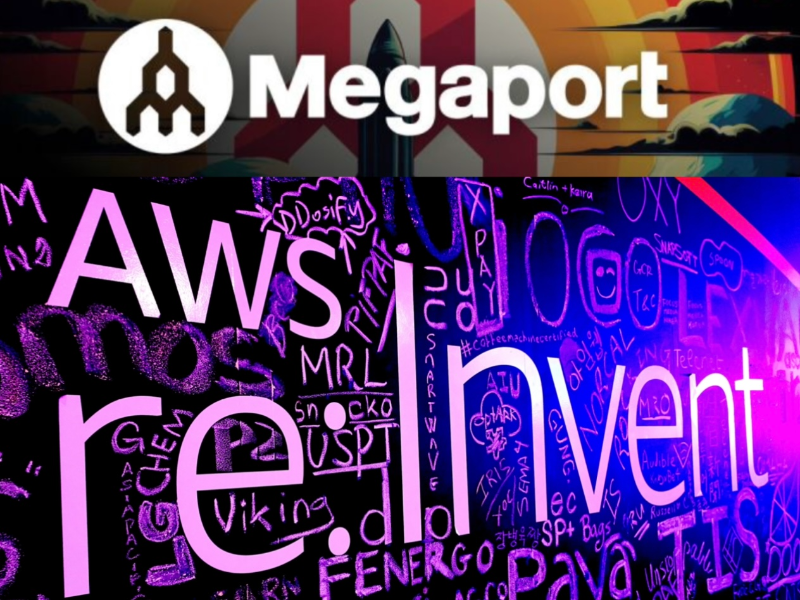- Megaport anticipates a surge in AI adoption in 2024, driven by the emergence of “AI as a service” offerings and the need for automation.
- Businesses transitioning to virtual operations will prioritize network flexibility to ensure seamless data movement across hybrid cloud environments.
- The complexity of multicloud architectures will increase in 2024, emphasizing the need for flexible private connectivity solutions like Megaport Cloud Router (MCR).
Inspired by the conversations at AWS re:Invent 2023, Megaport shares its 5 projections for 2024
With over 52,000 attendees and 250 sessions, AWS re:Invent 2023 buzzed with energy. Megaport’s booth showcased its latest innovations, with a spotlight on automation, APIs, and lightning-fast connections to AWS.
Reflecting on insights gained from attendees, Megaport anticipates the following 5 trends for 2024.
Also read: Amazon plans two AWS data centres for $10 billion in Mississippi
Also read: 7 cloud computing trends that will define 2024
1. Embracing AI
AI took center stage at re:Invent, with attendees split between eager adopters and cautious skeptics.
In 2024, Megaport expects most skeptics to embrace AI in some capacity as Forrester stated that 60% of generative AI skeptics will embrace the technology – whether knowingly or not. This is driven by the emergence of “AI as a service” offerings and the need for automation.
2. Enhancing network flexibility
Discussions with re:Invent participants unveiled a recurring concern regarding the necessity of maintaining network flexibility during the transition to virtual operations by businesses. While most organizations are not entirely cloud-native, they encounter various challenges in establishing and managing high-performance hybrid cloud setups. The dispersed nature of infrastructure gives rise to connectivity-related performance issues. Furthermore, activities like mergers, tech debt resolution, and operational enhancement add complexities as teams interact with legacy systems and practices.
The pivotal aspect revolves around ensuring network adaptability to enable swift and seamless data movement across environments. Numerous enterprises find themselves in a continual state of migration, shifting from on-premises to public cloud, replicating environments in new locations for expansion and resilience, and frequently incorporating additional cloud platforms.
With the persistent complexities in infrastructure that businesses face, the importance of flexibility in hybrid cloud networks is poised to escalate in 2024. Optimizing networks to cater to ever changing hybrid environments is imperative for maintaining a competitive edge in the market.
3. Multicloud interconnection
During re:Invent, there was a noticeable increase in discussions surrounding multicloud strategies compared to previous years. Organizations are actively opting for a “best of breed” approach when it comes to cloud workloads, prioritizing the most suitable provider for each task rather than relying solely on one provider. However, the complexity of managing multicloud environments can negate the benefits if not handled effectively.
The complexity of multicloud architectures is expected to rise in 2024. It is crucial for businesses to consider implementing a flexible private connectivity solution to interconnect their clouds. For those already interconnected, the focus in 2024 should be on optimizing speed between clouds and preparing for scalability across the entire multicloud network.
Several customers at the event mentioned their utilization of Megaport Cloud Router (MCR) for high-speed cross-cloud interconnections.
With MCR, they can utilize Virtual Cross Connects (VXCs) of up to 10G to link their clouds, facilitating growth on Megaport’s low-latency, elastic interconnection fabric and eliminating the need to route back to the nearest point of presence. Additionally, Megaport’s global private network infrastructure reduces latency and jitter, which is essential for ensuring seamless interoperability between clouds.
4. Strengthening cybersecurity
Security emerged as a prominent topic of discussion among many visitors to the re:Invent booth. With the increasing integration of AI in networking, the growing complexity of multicloud setups, and the expansion of networks to the edge, there is a heightened focus on security. Data is becoming more vulnerable, and attackers are employing increasingly sophisticated methods to infiltrate networks.
In 2024,businesses should enhance their cybersecurity posture by reassessing processes, conducting regular testing, implementing updates, automating threat detection, privatizing networks where feasible, and ensuring comprehensive involvement of the entire organization. Prioritizing a thorough review of each AI integration with the InfoSec team is essential, as these platforms introduce new considerations and potential risks that need to be carefully evaluated and managed.
5. Accelerating edge computing
The prevalence of businesses extending data to remote locations across globally distributed networks has become a standard practice in various industries. Beyond traditional office settings, branches now encompass diverse environments such as hospitals, factory floors, and mine sites. Discussions at re:Invent underscored the heightened emphasis on this trend.
Also read: Telin and Zenlayer team up to deliver edge computing solutions
Edge computing technologies have evolved significantly, reaching a stage where their adoption is almost imperative for businesses. Advancements in processor capabilities, energy efficiency of devices, and smarter memory processing have led to the establishment of cost-effective, high-performance edge environments. Despite these advancements, the connectivity between the edge and the cloud core faces growing strain, with escalating demands for speed and capacity. It is anticipated that in 2024, businesses will seek transformative edge networking solutions that seamlessly integrate with core infrastructure.
In response to these needs, solutions like Megaport Virtual Edge (MVE) facilitate the deployment of virtual network functions on a global private network. They provide high-performance edge-to-cloud capabilities and incorporate automation features to streamline middle-mile network complexities.

